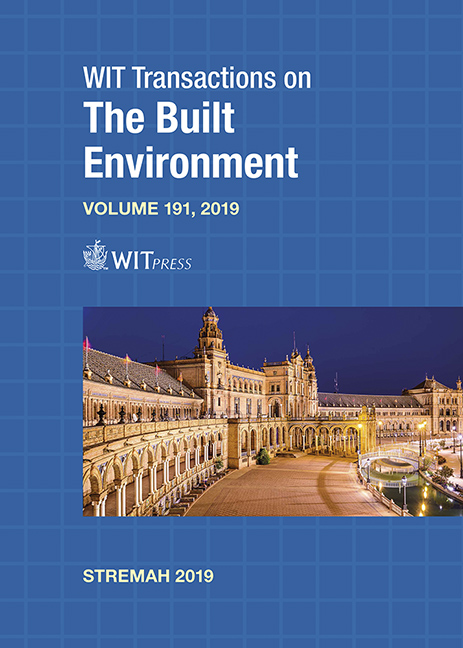SEISMIC AND NON-SEISMIC ANALYSES TO PRESERVE A CULTURAL HERITAGE MASONRY BUILDING
Price
Free (open access)
Transaction
Volume
191
Pages
11
Page Range
479 - 489
Published
2019
Paper DOI
10.2495/STR190411
Copyright
WIT Press
Author(s)
CLAUDIU SORIN DRAGOMIR, DANIELA DOBRE
Abstract
Romanian earthquakes in 1940 and 1977 produced severe damage to a significant number of buildings whose plans were characterized predominantly by irregularities like flexible diaphragms, structural discontinuities or L and H shapes, among others. These conceptual characteristics contributed in a decisive way to the damage or collapse of buildings designed and built according to the old seismic codes. On the other hand, European and international experience of previous strong earthquakes during the last decade shows that, in many urban areas, besides many old building, there is a number of modern RC buildings that do not meet the requirements of additionally improved codes for seismic-resistant design. The paper studies the behaviour of a masonry building under seismic and non-seismic actions, giving a practical and applicable interpretation of the dynamic amplification concept at the upper part of masonry buildings. Dynamic amplification effects, the types of damage and the variation of the structural rigidity after the consolidation works (compared to the initial situation), were evaluated. With respect to the instrumentation of micro-vibrations, the results obtained from the processing of the recorded micro-seismic data from 2019 emphasize the changes of the natural oscillation periods characteristic of the two directions, after applying the consolidation solution. This indicates an increase in rigidity obtained by reinforcing the building and, at the same time, it can be appreciated that the structural transfer of efforts has been made from the old structure to the new structural system. The work concludes that, in order to obtain correct information regarding the behavior of a structural system (due to the lack of data needed to create a reliable model), the contribution of each presented method is consistent, using the advantages of non-destructive methods and ambient/micro-seismic vibration monitoring.
Keywords
structural irregularities, natural oscillation period




